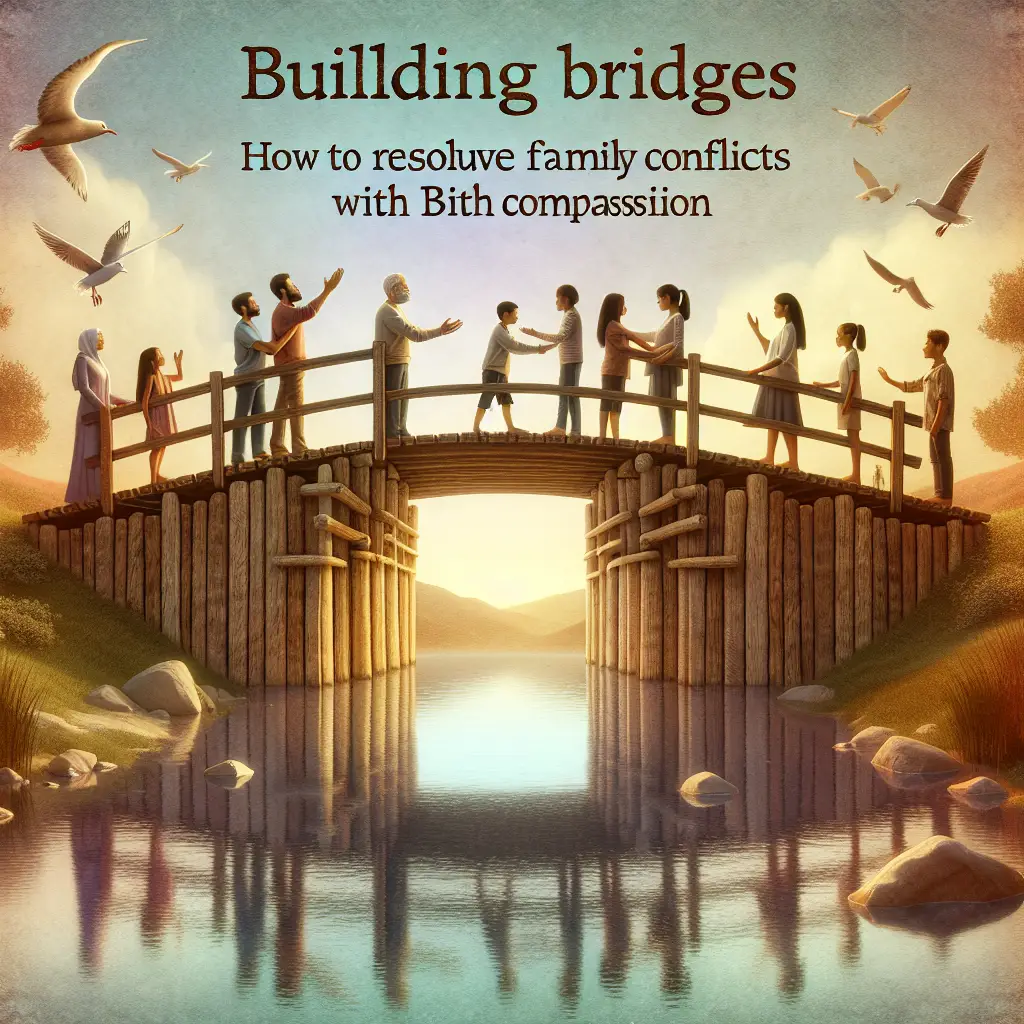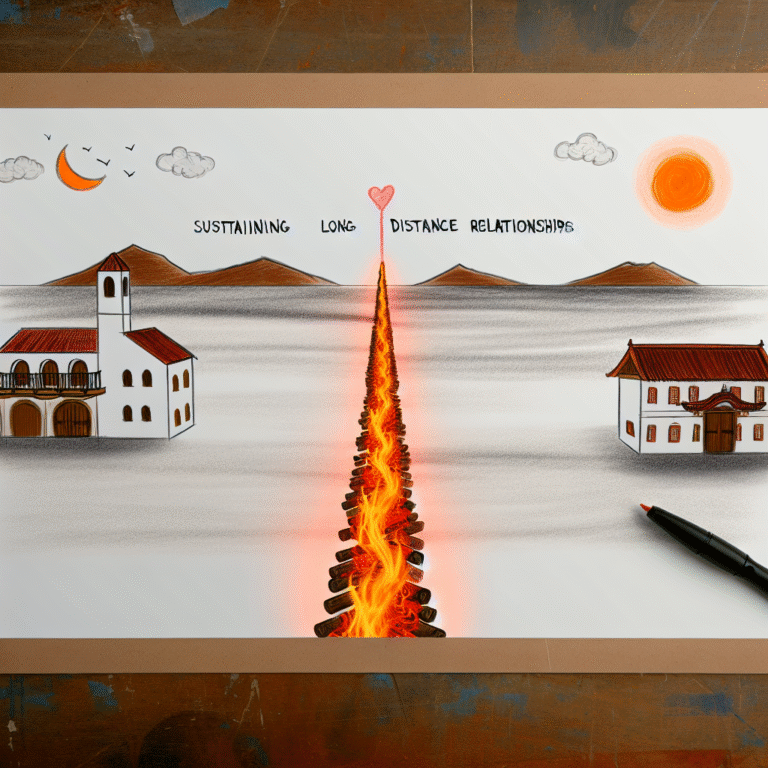
Building Bridges: How to Resolve Family Conflicts with Compassion
Introduction
Family conflicts are as old as time itself. Whether born out of differences in opinion, lifestyle choices, or miscommunication, these disputes can create rifts that seem impossible to mend. Yet the intersection of love and conflict is also a realm of profound potential for growth and understanding. This article, Building Bridges: How to Resolve Family Conflicts with Compassion, is designed to empower you with the tools needed to mend these emotional divides. By approaching conflicts with empathy and grace, families can transform challenges into opportunities for deeper connections.
Today, we live in a world where familial relationships can often take a back seat to the chaos of daily life. Stress, busyness, and technological distractions make it easy to overlook the importance of nurturing family bonds. However, conflict resolution is essential for fostering harmonious relationships and creating an environment where all members feel valued and understood. This article will highlight unique perspectives, actionable strategies, and compelling case studies designed to help you bridge gaps within your family through compassion.
Understanding the Roots of Family Conflict
Miscommunication: The Underlying Issue
Miscommunication often lies at the heart of family conflicts, making it essential to explore its nuances. When family members express themselves without considering context or emotional tone, misunderstandings can easily ensue. A simple misinterpretation can escalate into a full-blown argument, triggering feelings of anger, resentment, or disappointment.
Divergent Values and Beliefs
Another core element of familial disputes stems from differing values or beliefs. As individuals grow and evolve, their perspectives on life may shift, leading to friction when these changes are not acknowledged or respected. For instance, a parent may hold traditional views, while their child embraces modern ideologies, causing a clash that can lead to alienation.
Emotional Baggage
Family dynamics are often influenced by historical grievances, past failures, or neglected emotions. Carrying this emotional baggage can provoke reactions that exacerbate conflicts. Recognizing that previous experiences shape current responses is crucial in navigating conflicts with compassion.
Building Bridges: Strategies for Compassionate Conflict Resolution
1. Active Listening
One of the most effective strategies for resolving family conflicts is practicing active listening. This involves fully concentrating, understanding, and responding to what another family member communicates, without distractions or preconceived judgments.
Case Study: The Garcia Family
Consider the Garcia family, who found themselves in turmoil when siblings Maria and Alex disagreed over their parents’ will. Tensions escalated, leading to shouting matches and a complete breakdown in communication. During a family gathering, Maria decided to practice active listening. Instead of retaliating, she listened intently to Alex’s concerns, validating his feelings without immediately deflecting or arguing. This approach opened the door to a more constructive conversation, where both siblings could express their emotions without fear of judgment.
2. Empathy: Walk in Their Shoes
Empathy is a powerful tool in conflict resolution. By stepping into another family member’s shoes, you can gain insight into their feelings and perspectives. This shift in viewpoint helps ease tensions and fosters understanding.
Case Study: The Thompson Family
In a significant rift between parents and their teenage daughter, Jenna, emotions ran hot. The parents were frustrated by what they perceived as disobedience, while Jenna felt misunderstood. In an effort to bridge this gap, the family agreed to an empathy session. The parents shared their struggles and fears concerning Jenna’s choices, while Jenna opened up about her desire for independence. By validating each other’s experiences, the Thompsons managed to create an environment of respect and understanding, highlighting the essence of Building Bridges: How to Resolve Family Conflicts with Compassion.
3. Clear and Honest Communication
Clear communication is fundamental for any relationship but holds particular significance in family dynamics. Emotions can cloud our ability to express ourselves, making it crucial to be straightforward about feelings and needs.
Case Study: The Johnson Family
The Johnsons faced ongoing conflicts over household responsibilities, which led to feelings of resentment. During a family meeting, they employed a communication technique known as “I-statements,” focusing on expressing personal feelings rather than accusatory language. For instance, instead of saying, “You never help with chores,” they said, “I feel overwhelmed when household responsibilities are not shared.” This clear communication framework facilitated a more respectful dialogue, demonstrating how effective conversation can reinforce bonds rather than fracture them.
4. Setting Boundaries
Establishing healthy boundaries is essential in conflict resolution. Boundaries help family members understand where one person’s rights end and another’s begin. Respecting these limits can prevent misunderstanding and resentment from taking root.
Case Study: The Smith Family
The Smith family learned about the importance of boundaries when conflicts arose over their adult daughter’s return home after college. The parents wanted to support her, but found themselves overwhelmed by her expectations. By having an open discussion about each member’s needs and limits, they agreed on shared living arrangements that respected everyone’s privacy and independence. This newfound clarity allowed the Smiths to support each other while avoiding the pitfalls of dependency.
5. Seeking Professional Help
Sometimes conflicts run too deep for family members to resolve on their own. Seeking professional help, such as family therapy, can provide invaluable insight and techniques for mending relationships.
Case Study: The Robinson Family
The Robinsons were facing an emotional crisis after the passing of a family member, which intensified existing tensions. Recognizing that they struggled to communicate and process their grief together, they turned to family therapy. This professional intervention allowed them to address their feelings in a safe environment and develop a cohesive approach to their grief. It also equipped them with tools for future conflicts, reinforcing the philosophy of Building Bridges: How to Resolve Family Conflicts with Compassion.
The Power of Compassion
Compassion serves as the bedrock of successful conflict resolution. Embracing compassion allows family members to connect at a deeper level, demonstrating vulnerability and fostering healing.
1. The Role of Forgiveness
Forgiveness is essential in family conflict resolution. Holding onto past grievances only perpetuates a cycle of resentment and bitterness. Practicing forgiveness doesn’t mean forgetting; instead, it’s a conscious choice to release the emotional burden and move forward together.
2. Celebrating Progress
Acknowledging growth and improvement during the journey of conflict resolution helps reinforce positive behaviors and decision-making. Celebrating small victories enables families to build on their successes, laying the groundwork for healthy future interactions.
Conclusion
In reflecting on the essence of Building Bridges: How to Resolve Family Conflicts with Compassion, it becomes clear that every family has the potential to turn conflict into connection. By practicing active listening, empathy, clear communication, setting boundaries, and sometimes seeking professional guidance, families can navigate even the most challenging disputes.
The journey towards compassionate conflict resolution requires effort, patience, and a willingness to understand and support each other. As you embark on this transformative path, remember that every step taken with compassion strengthens the familial bond, allowing love and understanding to flourish amidst adversity.
FAQs Section
1. What are the first steps I can take to resolve a family conflict?
The first step is to initiate a conversation where all parties feel safe to express their feelings. Utilize active listening and empathy to understand perspectives and work toward common ground.
2. How do I deal with family members who refuse to communicate?
In cases of refusal to communicate, suggest setting aside a specific time to talk when emotions have cooled. If necessary, seek the help of a neutral third-party mediator to facilitate the conversation.
3. How important is it to apologize in family conflicts?
Apologizing can be crucial in mending relationships. A sincere apology demonstrates accountability and a willingness to make amends, fostering a culture of understanding and trust.
4. What if the conflict keeps recurring?
If conflicts recur, it may indicate underlying issues that haven’t been resolved. Consider engaging a family therapist who can provide insights and strategies to address these root causes effectively.
5. Can misunderstandings be completely avoided in families?
While misunderstandings can’t be entirely eliminated, fostering a culture of open communication and empathy can significantly reduce their occurrence. Emphasizing the importance of dialogue can build resilience against potential conflicts.
By integrating compassion into the fabric of family relationships, we can transform disagreements into opportunities for growth, understanding, and deeper connections. In your pursuit of harmony, remember that the bridge to resolution starts with you.














